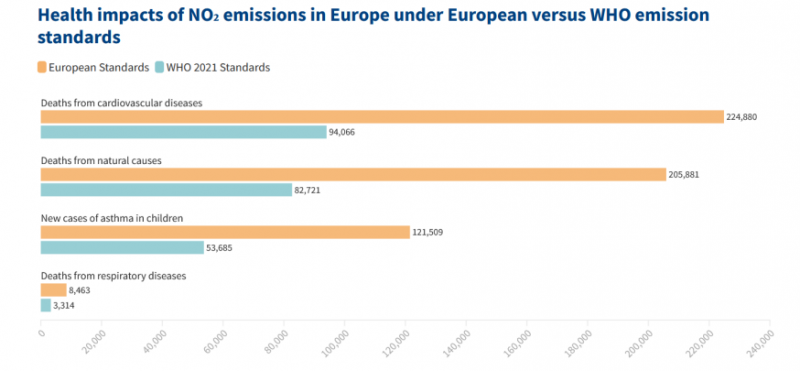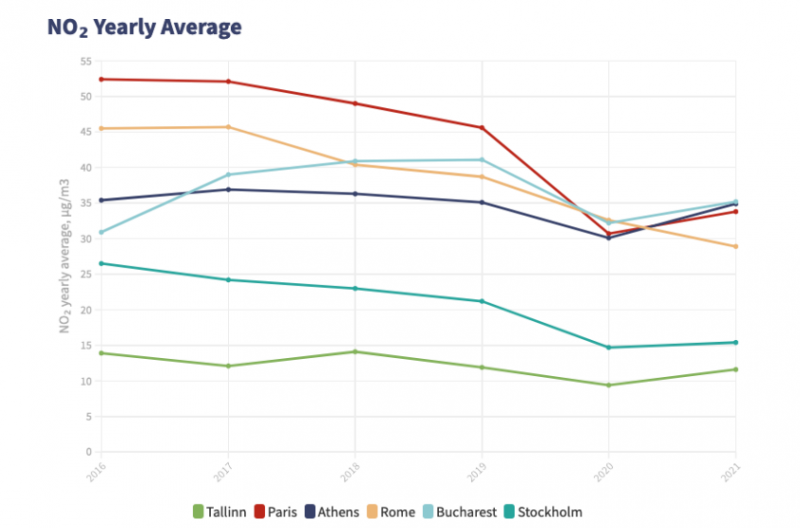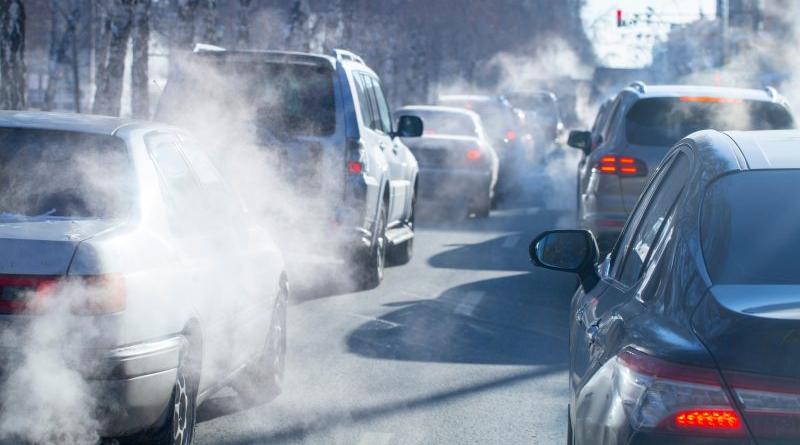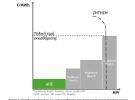Although emissions of nitrogen dioxide (NO2) in the European Union and the United Kingdom are on the decline, they do not meet guidelines issued by the World Health Organisation, a study found.
Concentrations of the gaseous air pollutant exceeded WHO limits in all EU27 and UK capitals last year, according to a study by the Centre for Research on Energy and Clean Air (CREA).
Nitrogen dioxide is a gas commonly released from the combustion of fuels in the transportation and industrial sectors and when inhaled can cause harmful effects on the respiratory system.
The road transport sector was the main source of emissions of nitrogen oxides in 2020, responsible for 37% of the emissions, followed by the agricultural sector with 19%, and the manufacturing and extractive industry at 15%, according to data from the European Environment Agency (EEA).
This is problematic for public health because much of road transport emissions occur in urban areas with high population density. This results in high levels of human exposure to the pollutant, CREA explains.
“This week, the European Parliament has approved the 2035 ban on sales of new fossil fuel cars. However, NO2 concentration levels and the resulting health impacts in European cities remain too high,” said Erika Uusivuori, Europe Analyst at CREA and co-author of the briefing.
“Lawmakers need to find more solutions to reduce transport-related emissions, and other highly emitting sources, such as power generation, need to be addressed immediately, too,” she added.
The World Health Organisation (WHO) updated in 2021 its air quality guidelines in light of new scientific data, introducing a daily (24-hour) limit and strengthening the allowed annual average limit of NO2 concentrations in the air.
The guidelines are not legally binding but can be used by countries as an indicator to set national standards. Aligning more closely with WHO recommendations could save 250,000 Europeans annually from deaths related to inhalation of nitrogen dioxide, the research finds.

Over 430,000 Europeans die annually as a consequence of NO2 levels with current European emission standards. This figure would drop by almost 60% to under 180,000 individuals if Europe would align with WHO recommendations, CREA’s research shows.
The years between 2016 and 2021 have seen a trend of consistent reduction of NO2 concentration levels in most EU capitals. This includes also the exception of 2020 and 2021 with low emissions related to a reduction in road transport during the COVID-19 pandemic.

The lowest levels of NO2 pollution in European capitals can be found in Tallinn (Estonia) and in Stockholm (Sweden), while the worst emitters in 2021 were Athens (Greece) and Bucharest (Romania).
Despite the overall reduction, however, the levels from all emitting sources throughout the EU remain too high compared to WHO guidelines, CREA explains.
To illustrate this, the research centre calculated the overshoot days for each capital city, meaning the date at which the annual average limit for the pollutant is reached and exceeded.

21 cities reached the overshoot days in the first half of the year, with Paris being the first, on 31 March.
Policy recommendations: stricter guidelines, more EV chargers
The research centre also issued recommendations for policymakers to improve air quality standards and safeguard citizens’ health.
CREA suggests the inclusion of stricter standards in the Ambient Air Quality Directive and in the revision of the Industrial Emissions Directive.
It also asks to implement the upcoming Euro 7 emission standards as soon as possible and to expand the electric charging station network to cover all European roads.
[Edited by Frédéric Simon]







